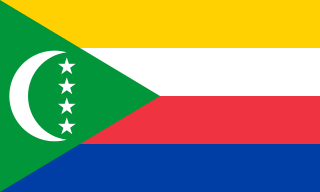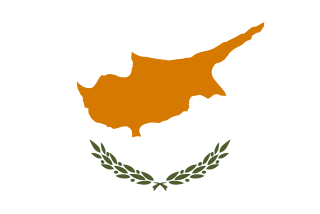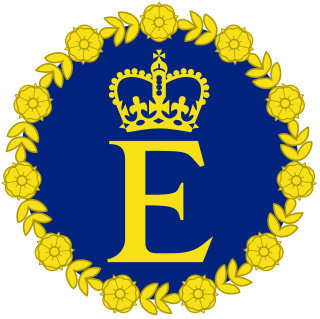


The Presidential Standard of Pakistan is the official flag of the president of Pakistan.



The Presidential Standard of Pakistan is the official flag of the president of Pakistan.
The Presidential Standard consists of the background of the flag of Pakistan with the gold presidential crest replacing the white crescent and star found in the flag of Pakistan. The presidential crest consists of a smaller crescent and star flanked by wheat branches with the words "Pakistan" written in Urdu underneath.
The Presidential Standard is displayed only in the presence of the president of Pakistan, particularly in the office and official residence of the president of Pakistan. It is always displayed alongside the flag of Pakistan. It is also flown alongside the flag of Pakistan in the presidential motorcade. The Presidential Standard is never flown atop any building.
The Presidential Standard was first adopted in 1956 and has since been redesigned twice: in 1974 and 1998.

The national flag of the Philippines is a horizontal bicolor flag with equal bands of royal blue and crimson red, with a white, equilateral triangle at the hoist. In the center of the triangle is a golden-yellow sun with eight primary rays, each representing a province. At each vertex of the triangle is a five-pointed, golden-yellow star, each of which representing one of the country's three main island groups—Luzon, Visayas, and Mindanao. The white triangle at the hoist represents liberty, equality, and fraternity. A unique feature of this flag is its usage to indicate a state of war if it is displayed with the red side on top, which is effectively achieved by flipping the flag upside-down.

The Flag of Singapore was adopted in 1959, the year Singapore became self-governing within the British Empire. It remained the national flag upon the country's independence from Malaysia on 9 August 1965. The design is a horizontal bicolour of red above white, overlaid in the canton by a white crescent moon facing a pentagon of five small white five-pointed stars. The elements of the flag denote a young nation on the ascendant, universal brotherhood and equality, and national ideals.

The national flag of Pakistan, also known as the Flag of the Star and Crescent is made up of a green field with a stylized tilted white crescent moon and five-pointed star at its centre, and a vertical white stripe at its hoist-end. Though the specific shade of green on the flag is mandated only as 'dark green', its official and most consistent representation is in Pakistan green, which is shaded distinctively darker. It was adopted by the Constituent Assembly of Pakistan on 11 August 1947, and it became the official flag of the Dominion of Pakistan on 14 August 1947, following independence from the British Empire. The flag was subsequently retained as that of the Islamic Republic of Pakistan in 1956, and remains in use as the national flag till this day.

The national flag of Turkey, officially the Turkish flag, is a red flag featuring a white star and crescent from its emblem. The flag is often called "the red flag", and is referred to as "the red banner" in the Turkish national anthem. The current Turkish flag is directly derived from the late Ottoman flag, which had been adopted in the late 18th century and acquired its final form in 1844. The measures, geometric proportions, and exact tone of red of the flag of Turkey were legally standardized with the Turkish Flag Law on 29 May 1936.

The national flag of the Union of the Comoros was designed in 2001 and officially adopted on 23 December 2001. It continues to display the crescent and four stars, which is a motif that has been in use in slightly various forms since 1975 during the independence movement. In its constitution, the government of the Comoros refers to the insignia as l'emblème national, or the "national emblem", though it is understood to actually represent a flag.

The flag of Brunei has a centered emblem of Brunei on a yellow field cut by black and white diagonal stripes. The yellow field represents the sultan of Brunei. The red crest consists of a crescent facing upwards, joined with a parasol, with hands on the sides.

The national flag of Cyprus came into use on 16 August 1960, under the Zürich and London Agreements, whereby a constitution was drafted and Cyprus was proclaimed an independent state. The flag was designed by artist İsmet Güney. The design of the flag deliberately employs peaceful and neutral symbols in an attempt to indicate harmony between the Greek and Turkish Cypriot communities, an ideal that has not yet been realised. In 1963, Greek Cypriot and Turkish Cypriot communities separated because of Cypriot intercommunal violence.

The national flag of Lithuania consists of a horizontal tricolour of yellow, green, and red. It was adopted on 25 April 1918 during Lithuania's first period of independence from 1918 to 1940, which ceased with the occupation first by the Soviet Union, and then by Nazi Germany (1941–1944). During the post-World War II Soviet occupation, from 1945 until 1989, the Soviet Lithuanian flag consisted first of a generic red Soviet flag with the name of the republic, then changed to the red flag with white and green bands at the bottom.

The flag of South Carolina is a symbol of the U.S. state of South Carolina consisting of a blue field with a white palmetto tree and white crescent. Roots of this design have existed in some form since 1775, being based on one of the first American Revolutionary War flags. While keeping most of its design intact since its adoption, it has varied over the years.

The national flag of India, colloquially called Tiraṅgā, is a horizontal rectangular tricolour flag, the colours being of India saffron, white and India green; with the Ashoka Chakra, a 24-spoke wheel, in navy blue at its centre. It was adopted in its present form during a meeting of the Constituent Assembly held on 22 July 1947, and it became the official flag of the Dominion of India on 15 August 1947. The flag was subsequently retained as that of the Republic of India. In India, the term "tricolour" almost always refers to the Indian national flag. The flag is based on the Swaraj flag, a flag of the Indian National Congress designed by Pingali Venkayya.

The flag of the United States Navy consists of the seal of the U.S. Department of the Navy in the center, above a yellow scroll inscribed "United States Navy" in dark blue letters, against a dark blue background.
Pakistan has several official national symbols including a flag, an emblem, an anthem, a memorial tower as well as several national heroes. The symbols were adopted at various stages in the existence of Pakistan and there are various rules and regulations governing their definition or use. The oldest symbol is the Lahore Resolution, adopted by the All India Muslim League on 23 March 1940, and which presented the official demand for the creation of a separate country for the Muslims of India. The Minar-e-Pakistan memorial tower which was built in 1968 on the site where the Lahore Resolution was passed. The national flag was adopted just before independence was achieved on 14 August 1947. The national anthem and the state emblem were each adopted in 1954. There are also several other symbols including the national animal, bird, flower and tree.

An Islamic flag is a flag either representing an Islamic Caliphate or religious order, state, civil society, military force or other entity associated with Islam. Islamic flags have a distinct history due to the Islamic prescription on aniconism, making particular colours, inscriptions or symbols such as crescent-and-star popular choices. Since the time of the Islamic prophet Muhammad, flags with certain colours were associated with Islam according to the traditions. Since then, historical Caliphates, modern nation states, certain denominations as well as religious movements have adopted flags to symbolize their Islamic identity.

The Star of India refers to a group of flags used during the period of the British Raj in the Indian subcontinent. India had a range of flags for different purposes during its existence. The Princely states had their own flags which were to be flown alongside the British flag as a symbol of suzerainty. The official state flag for use on land was the Union Flag of the United Kingdom and it was this flag that was lowered on Independence Day in 1947. The flag of the governor-general of India was defaced with the Star of India. The civil ensign and naval ensign were the Red Ensign or Blue Ensign, respectively, defaced with the Star of India emblem.
The flag and the coat of arms of Johor are state symbols of Johor, Malaysia. Like other states of Malaysia with Malay royalties, the state symbols of Johor are influenced by Johor's royalties, as well as Islam and the political and natural features of the state.

Queen Elizabeth II had a variety of flags to represent her personally and as head of state of several independent nations around the world. They were usually used on any building, ship, car, or aircraft where she was present.

The flag of the president of the United States consists of the presidential coat of arms on a dark blue background. While having the same design as the presidential seal since 1945, the flag has a separate history, and the designs on the flag and seal have at different times influenced each other. The flag is often displayed by the president in official photos, or flown next to the casket of a former president in official funeral processions, and flown on the president's motorcade. The flag is not flown at half-staff since there is always an incumbent president in office. The current flag is defined in Executive Order 10860:
The Color and Flag of the President of the United States shall consist of a dark blue rectangular background of sizes and proportions to conform to military and naval custom, on which shall appear the Coat of Arms of the President in proper colors. The proportions of the elements of the Coat of Arms shall be in direct relation to the hoist, and the fly shall vary according to the customs of the military and naval services.

The flag of the president of the Philippines or the presidential standard of the Philippines consists of the presidential coat of arms on a blue background. While having the same design as the presidential seal since 1947, the flag has a separate history, and the designs on the flag and seal have at different times influenced each other.

The Indian Naval Ensign, also referred to as the Indian White Ensign, or Nishaan, is the naval ensign of the Indian Navy (IN), used aboard Indian naval vessels, shore establishments and naval air stations as its principal form of maritime identification.

The presidential standard of the Republic of Azerbaijan is the official flag of the president of Azerbaijan.